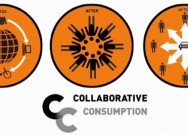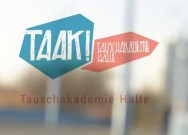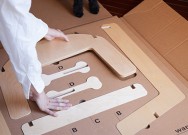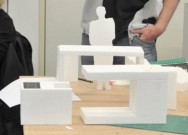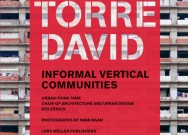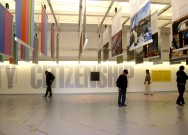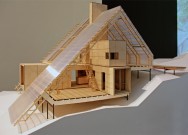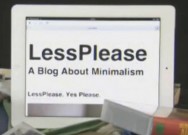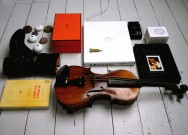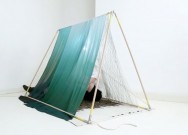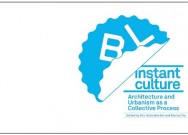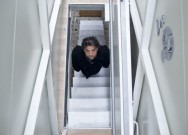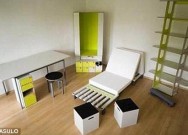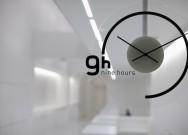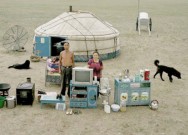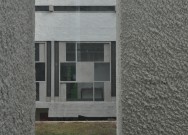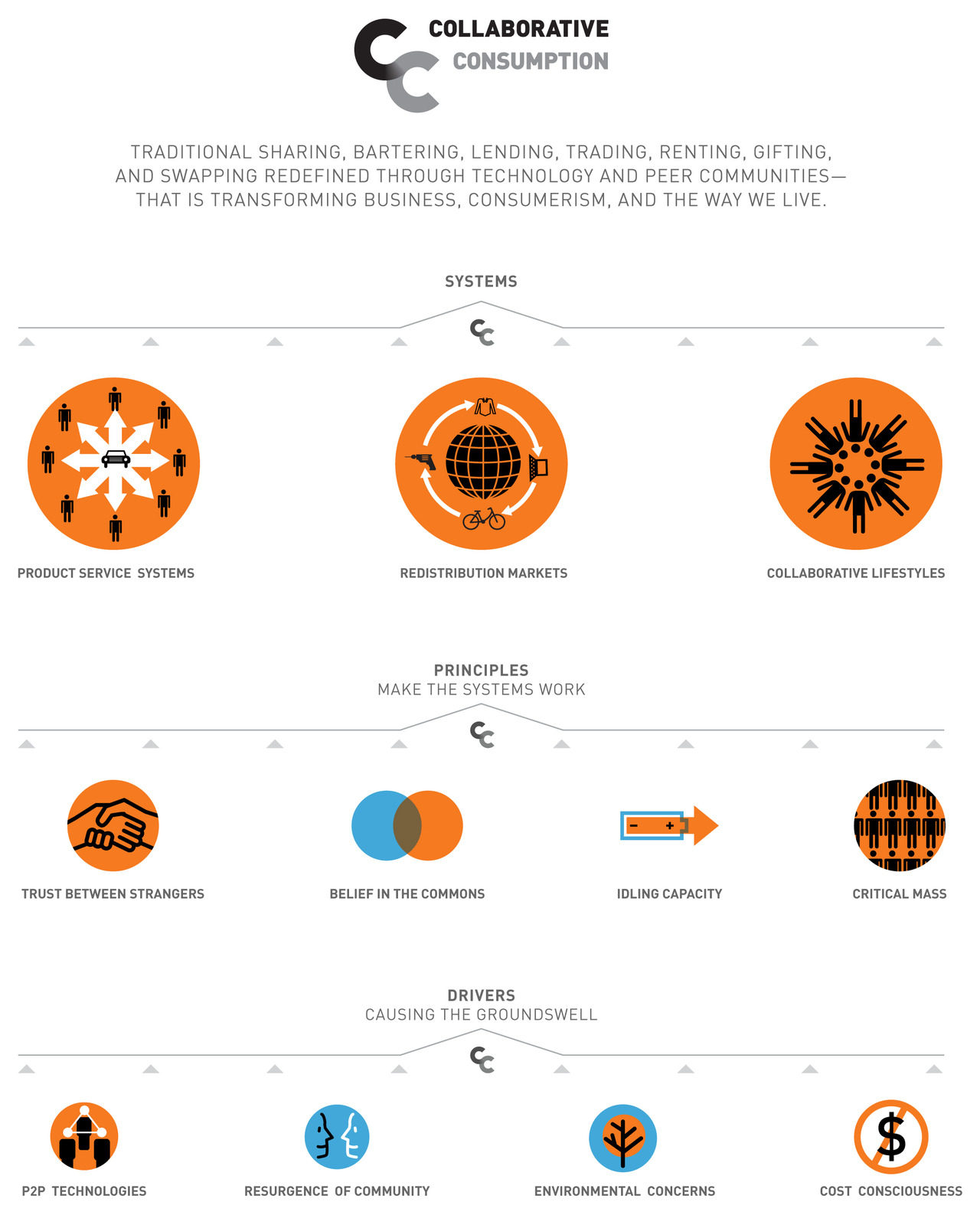Collaborative Consumption
Collaborative Consumption
vortrag von Rachel Botsman auf der TED-konferenz 2010 in Sydney
TIME names Collaborative Consumption
as one of the „10 Ideas That Will Change The World”.
Collaborative Consumption describes the rapid explosion in traditional sharing, bartering, lending, trading, renting, gifting, and swapping reinvented through network technologies on a scale and in ways never possible before.
http://www.time.com/time/specials/packages/article/0,28804,2059521_2059717_2059710,00.html
http://www.collaborativeconsumption.com
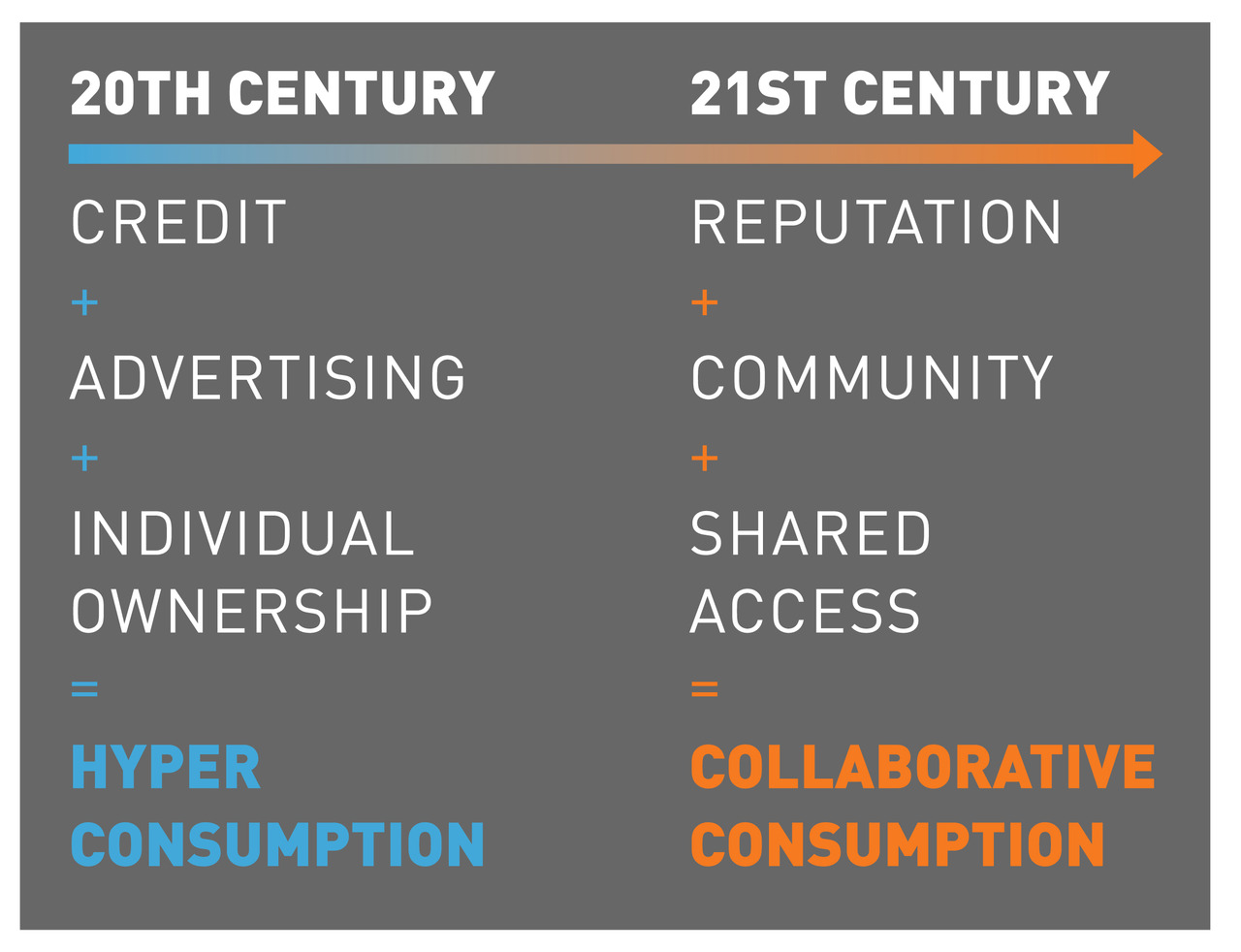
Taak!
Tauschakademie Halle
Die »Tauschakademie Halle« wurde ins Leben gerufen von Franziska Tanner, Jantje Almstedt, Jenni (gesprochen ‚Yenni‘) Ottilie Keppler und Johanna Padge, Studentinnen der Burg Giebichenstein Kunsthochschule Halle.
In der Tauschakademie können Interessen, Wissen und Fähigkeiten, die normalerweise unbeachtet bleiben, getauscht werden. Der eine beschäftigt sich in seiner Freizeit mit dem Stricken von Kolibris, ein anderer untersucht in seinem Studium die Weltwirtschaftskrise.
Die Workshops, Vorträge und Diskussionen sind offen für jeden. Sie kosten kein Geld, sondern funktionieren über Tauschhandel: Der Workshopgeber sagt, was er oder sie gerade braucht und die Teilnehmer bringen etwas davon mit.
Die Taak! ist Teil des weltweiten Trade School Netzwerks, das 2010 in New York gegründet wurde und in schon über 20 Städten weltweit präsent ist.
Architecture
for dogs

Architecture for Dogs, invented by architects and designers, is an extremely sincere collection of architecture and a new medium, which make dogs and their people happy. By looking at the diagrams or pictures or watching the videos, people all over the world can make these themselves. Dogs are people’s partners, living right beside them, but they are also animals that humans, through crossbreeding, have created in multitudes of breeds. Reexamining these close partners with fresh eyes may be a chance to reexamine both human beings themselves and the natural environment. As our first project, we present 13 pieces of architecture. Please take the time to carefully examine the details of these elaborately designed ingenious structures, and because it’s free to download the blueprints, if you find one you like, make it yourself for your dog.
Kenya Hara
Hit the link and find out!
http://architecturefordogs.com
Minimal Küchen
Kochen und Bewirten ohne Ballast
… auch ein Minimalisierungs-Projekt
1, 2, 3 … leichte Küche
Kochen und Bewirten ohne Ballast
Projekt im Wintersemester 2009/10
Wieviel Küche brauchen wir eigentlich? Unter dieser Frage entwickelten Studierende des Industriedesign an der Burg Giebichenstein sechs minimalistische Küchen in funktionsfähigen 1:1 Prototypen. Entstanden sind Küchensolitäre, die sich von herkömmlichen Raumbindungen und Strukturen lösen und in bewusstem Kontrast zu den tradierten Bildern von Einbauküchen stehen. Gestaltet wurden „Arbeitsplätze” und deren Organisation für eine der schönsten Alltagsbeschäftigungen: Kochen.
Die Rahmenbedingungen:
(1) Ein Quadratmeter Stellfläche im unbenutzten Zustand,
(2) zwei Kochstellen,
(3) Bewirtung von drei Gästen.
read more
1-2-3 leichte Küche
Torre David / Gran Horizonte
wins the Golden Lion at Venice Biennale
Architecture Biennale 2012
Torre David / Gran Horizonte
Interview with Alfredo Brillembourg and Hubert Klumpner (Urban-Think Tank) about their contribution „Torre David / Gran Horizonte“ (Urban-Think Tank together with Justin McGuirk) – awarded with The Golden Lion for the Best Project of the International Exhibition „Common Ground“.
Artikel zur Ausstellung:
urban think tank iwan baan win golden lion at venice biennale
link zu Urban Think Tank:
www.u-tt.com
Torre David
from Urban-Think Tank
Torre David, a 45-story office tower in Caracas designed by the distinguished Venezuelan architect Enrique Gómez, was almost complete when it was abandoned following the death of its developer, David Brillembourg, in 1993 and the collapse of the Venezuelan economy in 1994.
Today, it is the improvised home of a community of more than 750 families, living in an extra-legal and tenuous occupation that some have called a vertical slum. Urban-Think Tank, spent a year studying the physical and social organization of this ruin-turned-home. Where some only see a failed development project, U-TT has conceived it as a laboratory for the study of the informal. In their “Torre David / Grand Horizonte” exhibit and in their forthcoming book, Torre David: Informal Vertical Communities, the architects lay out their vision for practical, sustainable interventions in Torre David and similar informal settlements around the world. They argue that the future of urban development lies in collaboration among architects, private enterprise, and the global population of slum-dwellers.
This film is a call to arms to architects and everyone–to see in the informal settlements of the world a potential for innovation and experimentation, with the goal of putting design in the service of a more equitable and sustainable future.
Spontaneous Interventions:
Design Actions for the Common Good
Der US-Pavillon auf der ARCHITEKTURBIENNALE VENEDIG 2012
spontaneous interventions:
design actions for the common ground
Der amerikanische Pavillon dokumentiert die Geschichte der offiziellen, staatsgetragenen Stadtentwicklung mit ihren vielen Fehlentwicklungen und setzt erfrischend neue Protagonisten in Szene: die Stadtbewohner, die selber Nutzungskonzepte für ihre öffentlichen Räume umsetzen und so Missstände beheben und ihr Umfeld kreativ und den Anforderungen entsprechend gestalten.
link zur webseite mit allen „interventionen”:
http://www.spontaneousinterventions.org
Artikel zur Ausstellung:
http://www.designboom.com/architecture/us-pavilion-at-the-venice-architecture-biennale
Mit der Auszeichnung des US-amerikanischen Beitrags Spontaneous Interventions: Design Actions for the Common Good ging eine „Besondere Erwähnung” an ein soziales beziehungsweise partizipatorisches Projekt: Die „interaktive Installation” beeindruckte die Jury, da sie die „Kraft des Individuums feiere, die Gesellschaft mit kleinen aber effizienten Mitteln zu verändern.”
Eine unprätentiöse Präsentation, die Freude und Hoffnung macht – man kann die Dokumentationen der Projekte an einfachen Jalousien herabziehen, um sie zu studieren – gleichzeitig gibt ein Gegengewicht den Blick frei auf Anlass und Wirkung der Intervention.
Possible Greenland
New Arctic Building Practice
Architecture Biennale Venice 2012
Possible Greenland
New Arctic Building Practice – ‚inhabiting‘ by Vandkunsten Architects
social spaces are delivered in the form of combined supply routes an access decks which make it natural for inhabitants to move closer to one another. inhabitants meet on the deck to carry out common functions such as shared laundry, smoke ovens and snowmobile parking.
http://www.designboom.com/architecture/danish-pavilion-possible-greenland-at-the-venice-biennale/
Minimalisten
und Asketen
Arte
NEO-MINIMIALISTEN – WENIGER IST MEHR
Der Konsum von Dingen wie Möbel, Klamotten und DVD’s macht sie nicht glücklich, sondern schränkt sie ein. Die Neo-Minimalisten wollen größtmögliche individuelle Freiheit und deshalb nur noch mit dem Nötigsten auskommen. Was bleibt sind ein Bett, ein Schrank und ein Laptop.
Scobel – Das einfache Leben
Aussteiger gab es immer schon. Bis heute entscheiden sich immer wieder Menschen ganz bewusst für Askese und Rückzug. Gert Scobel spürt die modernen Erscheinungsformen neuer Askese auf und diskutiert sie mit seinen Gästen Abtprimas Notker Wolf und der Philosophin Svenja Flaßpöhler.
What would you take with you?

If your house was burning, what would you take with you? It’s a conflict between what’s practical, valuable and sentimental. What you would take reflects your interests, background and priorities. Think of it as an interview condensed into one question.
indoor / home wear / home tool
Stretch Out – Home Wear
Film and Edit: David Joosten
A project about the moment of arriving at new places. I wonder how we make these unknown places our own. Stretch Out – Home Wear examines the process of creating an independent and flexible space, and functions as a tool that helps you to create a home. A wooden tent frame and special bundle, that once enrolled uncovers a series of textiles and products, give you the opportunity to endlessly arrange and rearrange yourself all over the place. This process of construction is the key feature of the design; building your home by taking up space.
My Infinite Home Tool
Two portable objects for storage, that have the double function of a suitcase and a show display. You carry them with you or put them down as cabinets. They transport what you need and show what you have chosen to take with you. This project started from a personal experience of extensive traveling and having to live out of one suitcase. Choices had to be made about what to bring and what to leave behind. While making these choices was hard it also made it possible to get rid of unnecessary things. The important and good items that you decide to bring are the objects that define your identity.
Casulo
mobiles Wohnen
Living-Unit Beispiel
Casulo – Das mobile Zimmer
Design: Sebastian Mühlhäuser und Marcel Krings
Casulo ist eine komplette Zimmereinrichtung, die sich in weniger als 8 Minuten auf das Grundmaß einer Europalette zusammenpacken oder wieder aufstellen lässt. Dabei wird keinerlei Werkzeug benötigt.
http://www.supermagnete.de/project39
9 Hours Minimalismus Hotel
von Fumie Shibata & Masaaki Hiromura
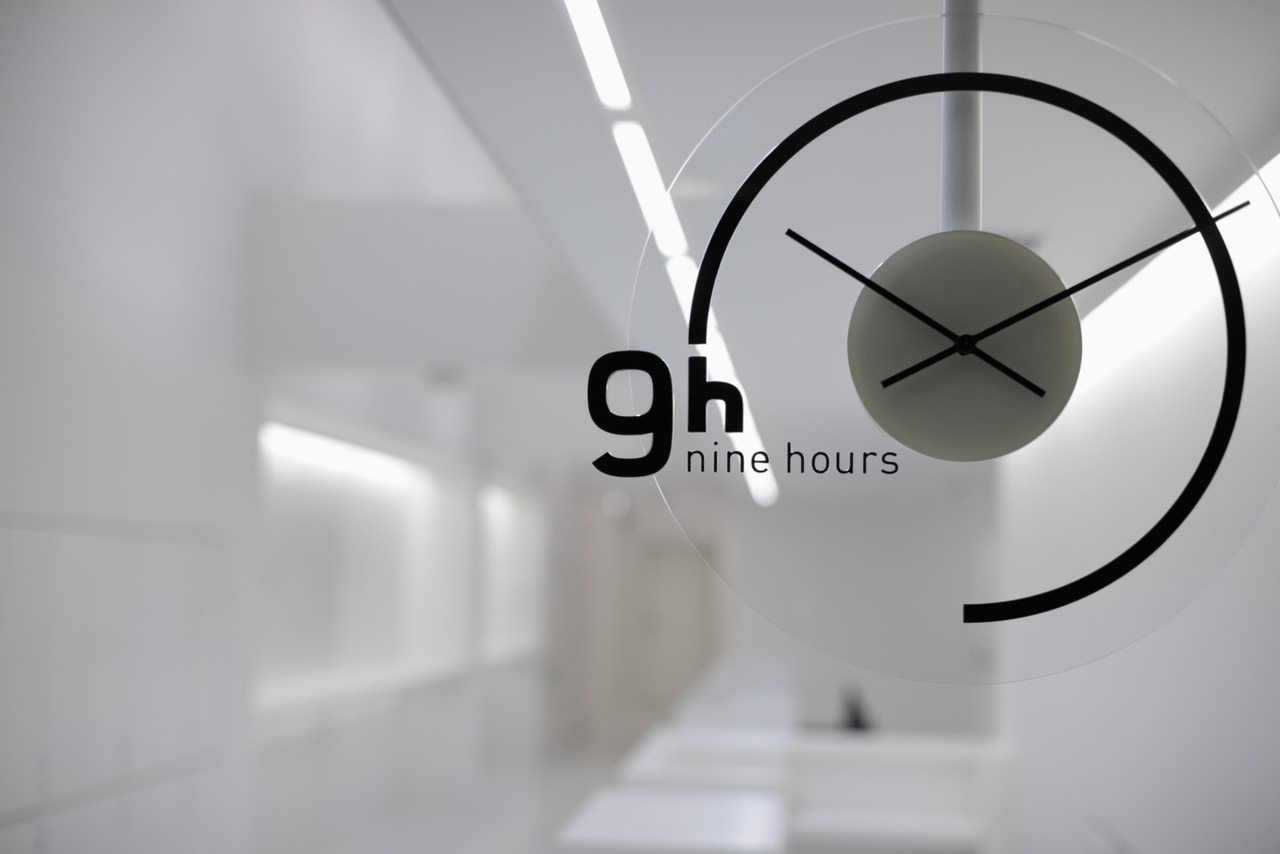
Hit the Link: http://randomwire.com/9-hours-designer-capsule-hotel
Chinese Families Pose
with Every Possession They Own

Foto Huang Qingjun
They say we live in a materialistic age. Everyone seems to be some level of a hoarder with countless possessions that they consider essential to function in the modern world. Laptops, smartphones, e-readers, tablets—how would one live without them?
